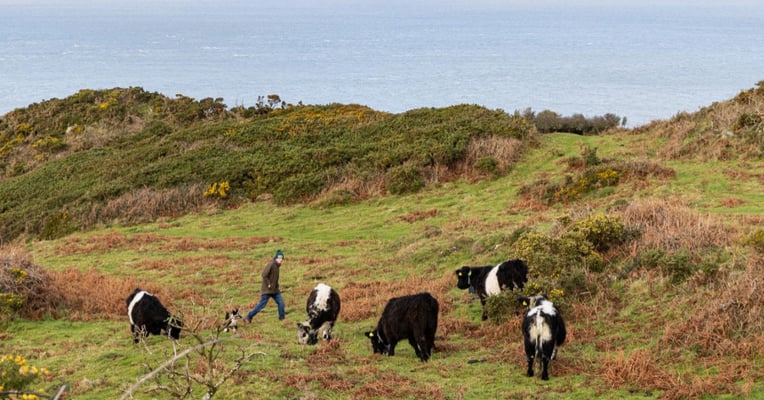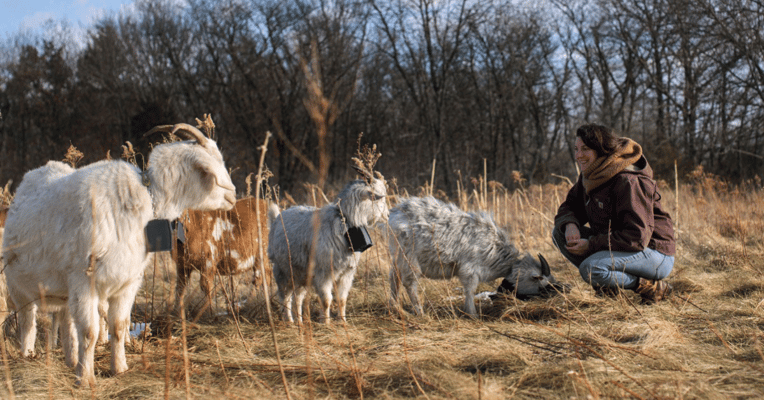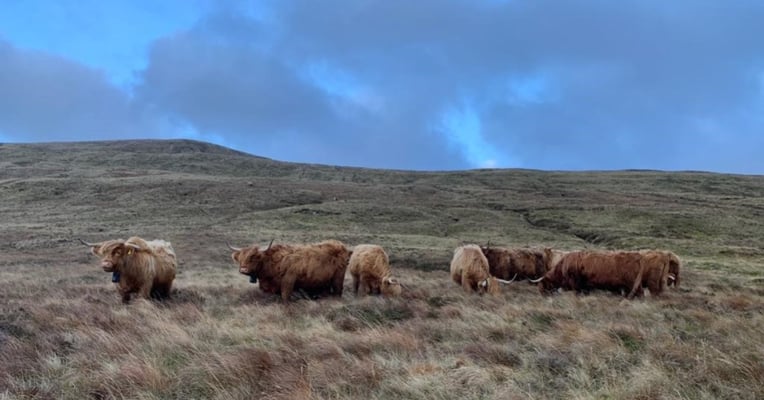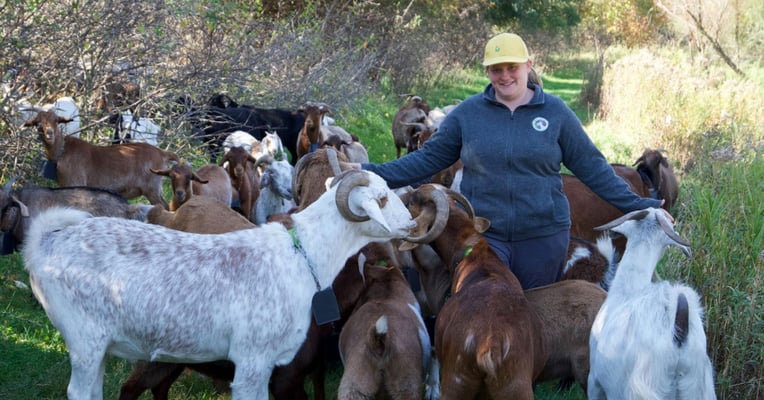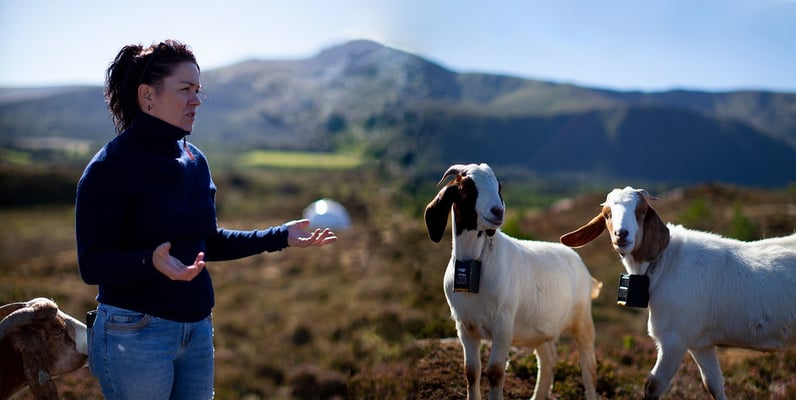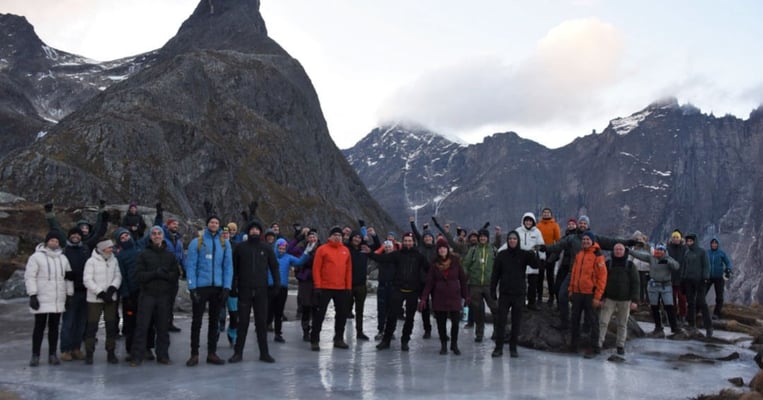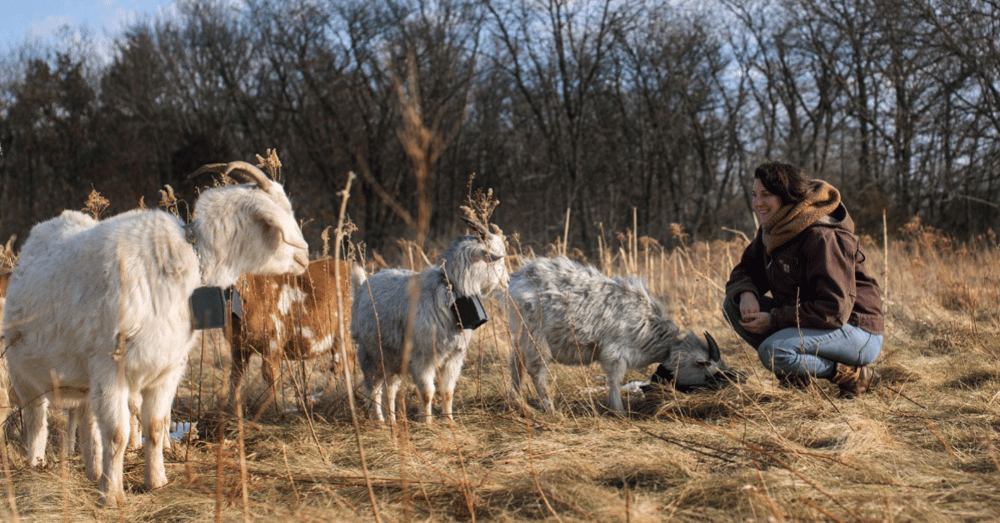
Grazing expert on virtual fencing

What is virtual fencing for livestock? How does it work? And is it as revolutionizing as some people say? After a decade of working with American farmers to get more livestock on the land, grazing advocate Meghan Filbert believes it could be the last piece of the puzzle in what has become her life’s purpose.
Who is Meghan Filbert?
Aside from being a goat and sheep farmer with an M.S. in Animal Science and International Agriculture from Cornell University, Meghan is a veteran of Practical Farmers of Iowa (PFI), a non-profit organization equipping farmers to build resilient farms and communities. Her field of expertise is the practical and financial aspects of integrating grazing livestock into cropping systems, particularly corn and soybeans. And for the last eight years, one particular thing has been keeping the masses from adopting her gospel.
“Either they don’t have fencing, or the fence they have is in disrepair,” Meghan says, smiling as she shrugs. “It’s been a serious thorn in my side.”
Until now.
The world’s first virtual fence
Enter Nofence, a virtual fencing solution for livestock. To start, users define a virtual pasture on their Nofence app. Then, they equip the animals with GPS collars and train them to respond to the audio warnings, and…that’s it. From then on, farmers can locate, monitor, and move their animals from wherever they want.
“It’s the missing piece,” Meghan says. “The first time I heard about it, I got the chills. It will take all of the projects I’ve been working on for the last decade to a whole other level, especially for those who want to integrate livestock into their crop operations. And it doesn’t stop there.”
The benefits
In addition to the economic and quality-of-life benefits mentioned a bit further down, Meghan points out that the rise of virtual fence technology has also resulted in unexpected consequences.
“For example, targeted grazing businesses like the Munch Bunch are popping up everywhere. That’s exciting because the US has an incredible amount of land considered marginal or underutilized—and the number one barrier for beginning livestock farmers, particularly those without a farming background, is land access. By opening those marginal areas to grazing, virtual fences make raising livestock on a smaller scale possible and super attractive. And for these grazing enterprises, there’s a real economic case to be made.”
Aside from the not-so-insignificant cost of acquiring physical fences, the true economic upside depends on the price you put on your labor and time. Consider this: how much time and effort do you spend every year setting up, maintaining, and repairing fences? Now add the time and effort of managing grazing rotations, of stressing about the animals’ whereabouts, dealing with escapes, and of trying to keep animals out of certain areas. In the end, it adds up. With virtual fences, you don’t just eliminate the time and cost of all that labor; you create the opportunity for gain.
“It opens up your day to create other revenues on the farm,” says Meghan, “or spend more time with your family, for example. How do we put a price on something like that?”
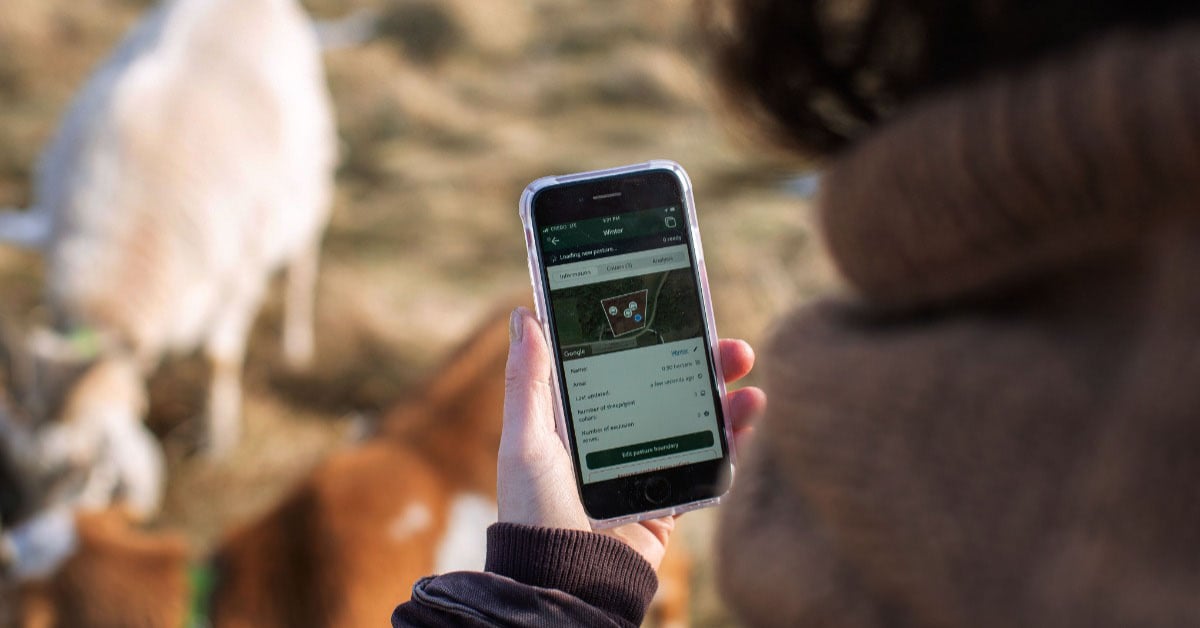
In the Nofence app, you can locate your animals and create new pastures anytime, from anywhere.
A new chapter
Because of what virtual fences could mean for her dream, Meghan invited Nofence to Iowa to present to PFI and its members. What happened next came as a bit of a surprise.
“During the presentation,” Meghan says, “this light bulb went off in my head. I thought to myself…I want to be their liaison. It was the perfect next step in my life’s goal of addressing the barriers to grazing. I have strong relationships with a broad farmer network and I would get to evolve those relationships in a new and exciting way. It would add another layer to the holistic approach to farming.”
As it turned out, Nofence was just as excited about this opportunity as she was. In June 2022, Meghan embarked on her new adventure as one of Nofence’s Adoption Program Managers in the US and will play a crucial part in the current expansion plan. To chat with Meghan about livestock on the land or virtual fences, you can pop her a message at meghan@nofence.no or add her on LinkedIn.
